Search Result
Results for "
Axis
" in MedChemExpress (MCE) Product Catalog:
1
Isotope-Labeled Compounds
| Cat. No. |
Product Name |
Target |
Research Areas |
Chemical Structure |
-
- HY-P99419
-
|
GEN1046
|
PD-1/PD-L1
|
Cancer
|
|
Acasunlimab (GEN1046) is a bispecific antibody (bsAb) targeting PD-L1 and 4-1BB. Acasunlimab enhances T-cell and NK-cell function through conditional 4-1BB stimulation while constitutively blocking the PD-1/PD-L1 inhibitory axis. Acasunlimab can be used in research of cancer .
|
-

-
- HY-P1520A
-
|
|
GnRH Receptor
|
Neurological Disease
|
|
Prolactin Releasing Peptide (1-31), human (acetate) is a high affinity GPR10 ligand that causes the release of the prolactin. Prolactin Releasing Peptide (1-31) binds to GPR10 for human and rats with Ki values of 1.03 nM and 0.33 nM, respectively. Prolactin Releasing Peptide (1-31) can be used for the research of the hypothalamo-pituitary axis .
|
-

-
- HY-155520
-
|
|
Parasite
|
Infection
|
|
Antileishmanial agent-19 (Compound F27) is an antileishmanial agent, with a IC50 of 3.39 μM for L. donovani promastigotes. Antileishmanial agent-19 inhibits Leishmania prolyl-tRNA synthetase. Antileishmanial agent-19 inhibits host PI3K/Akt/CREB axis-mediated IL-10 secretion. Antileishmanial agent-19 induces autophagy-mediated apoptosis in L. donovani promastigotes. Antileishmanial agent-19 reduces parasite burden in L.d-infected animals .
|
-
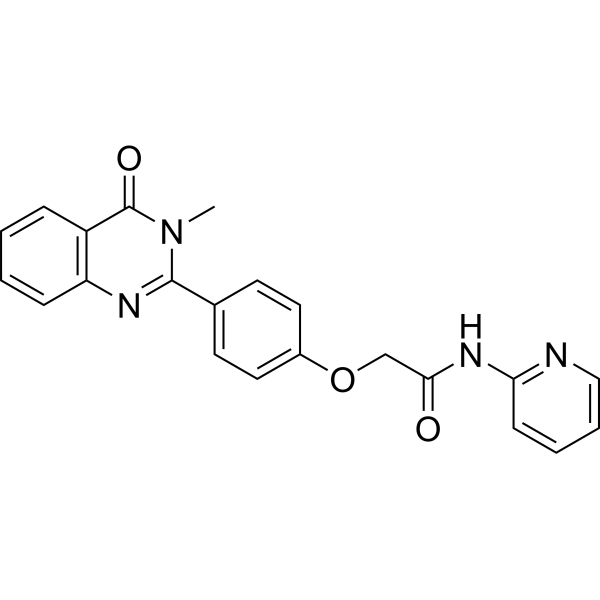
-
- HY-P1520
-
|
|
GnRH Receptor
|
Neurological Disease
|
|
Prolactin Releasing Peptide (1-31), human is a high affinity GPR10 ligand that cause the release of the prolactin. Prolactin Releasing Peptide (1-31) binds to GPR10 for human and rats with Ki values of 1.03 nM and 0.33 nM, respectively. Prolactin Releasing Peptide (1-31) can be used for the research of the hypothalamo-pituitary axis .
|
-

-
- HY-P3539
-
|
|
GCGR
|
Neurological Disease
Endocrinology
|
|
Exendin-4 (3-39) is a peptide. Exendin-4 (3-39) is a truncated form of Exendin-4 (HY-13443) that lacks the first two amino acids. Exendin-4 is a potent Glucagon-like peptide-1 receptor (GLP-1r) agonist. Exendin-4 (3-39) and Exendin-4 can be used for the research of diabetic and hypothalamic-pituitary-adrenal (HPA) axis .
|
-

-
- HY-143224
-
|
|
Others
|
Cancer
|
|
NCGC00138783 is a selective inhibitor targeting CD47/SIRPα axis, with an IC50 of 50 µM. NCGC00138783 directly blocks the interaction between CD47 and SIRPα axis .
|
-
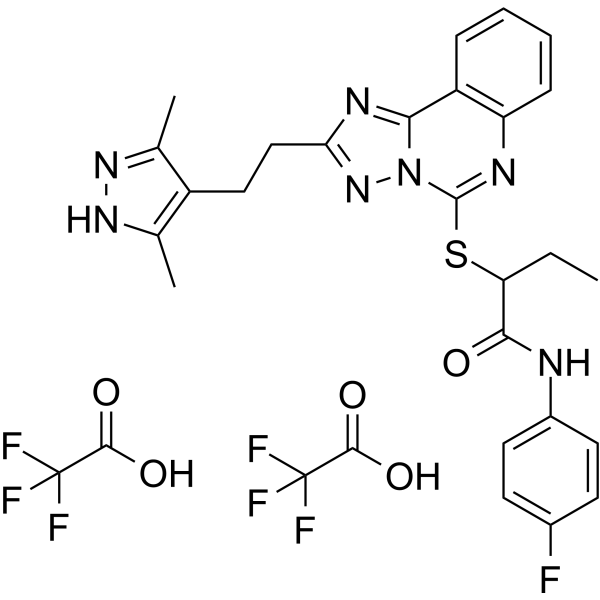
-
- HY-143224B
-
|
|
Others
|
Cancer
|
|
NCGC00138783 TFA is a selective inhibitor targeting CD47/SIRPα axis, with an IC50 of 50 μM. NCGC00138783 TFA directly blocks the interaction between CD47 and SIRPα axis .
|
-

-
- HY-143224A
-
|
|
Others
|
Cancer
|
|
NCGC00138783 free base is a selective inhibitor targeting CD47/SIRPα axis, with an IC50 of 50 µM. NCGC00138783 free base directly blocks the interaction between CD47 and SIRPα axis .
|
-
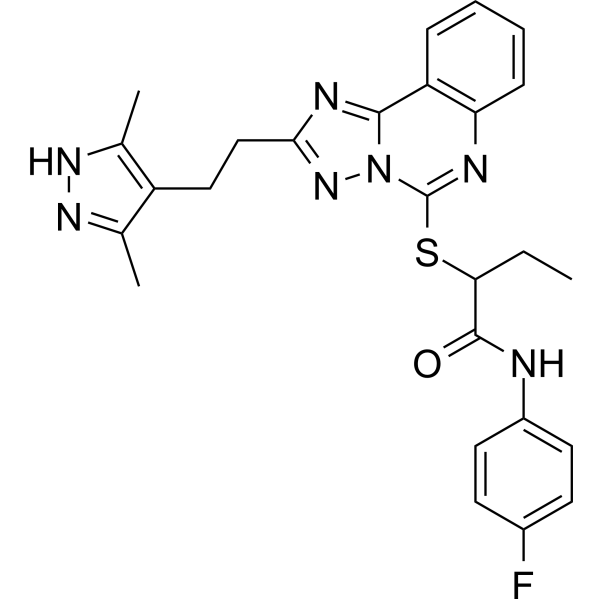
-
- HY-160187
-
|
|
Others
|
Cardiovascular Disease
|
|
AAA is a potent blocker of 20-Hydroxyeicosatetraenoic acid (20-HETE) receptor that binds directly to GPR75 and prevents the increases in intracellular Ca2+, IP-1 and β-arrestin .
|
-

-
- HY-152093
-
|
|
Ferroptosis
|
Cancer
|
|
YL-939 is a potent ferroptosis inhibitor. YL-939 inhibits ferroptosis by targeting the PHB2/ferritin/iron axis .
|
-
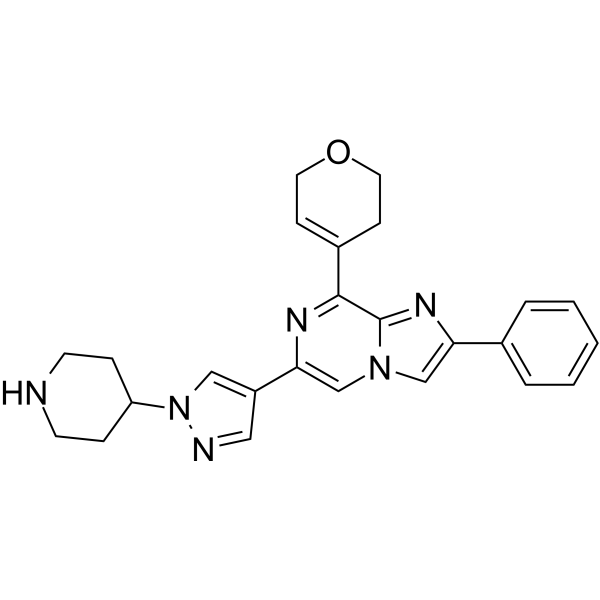
-
- HY-N1374
-
|
|
ERK
|
Inflammation/Immunology
|
|
Magnolin, a major component of Magnolia liliiflora, inhibits the Ras/ERKs/RSK2 signaling axis by targeting the active pocket of ERK1 and ERK2 with IC50s of 87 nM and 16.5 nM, respectively.
|
-

-
- HY-N2995
-
|
Poricoic acid A(F)
|
NF-κB
Keap1-Nrf2
|
Cancer
|
|
Poricoic acid A, isolated from Poria cocos, possesses anti-tumor activity . Poricoic acid A enhances melatonin inhibition of AKI-to-CKD transition by regulating Gas6/AxlNFκB/Nrf2 axis .
|
-

-
- HY-160225
-
|
|
STING
|
Inflammation/Immunology
|
|
non-CpG oligomer from the Listeria monocytogenes genome. When transfected into cells, ISD sodium strongly enhances the expression of IFN-β. This ISD-induced response is mediated by the STING-TBK1-IRF3 signaling axis .
|
-
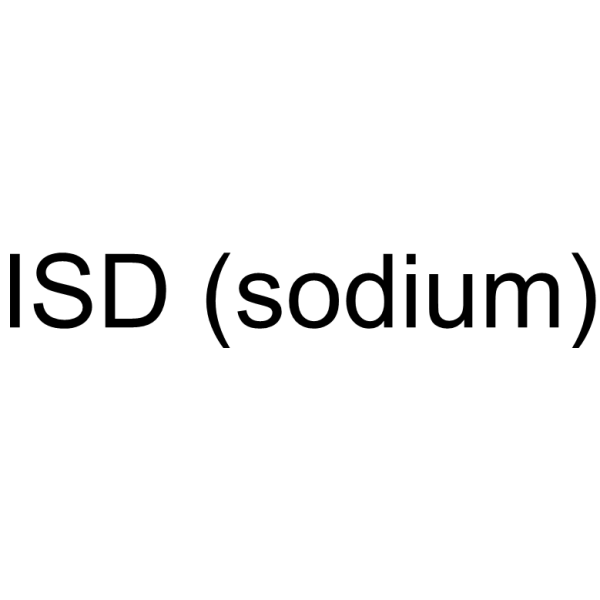
-
- HY-N6779
-
Patulin
3 Publications Verification
Terinin
|
Bacterial
Apoptosis
Autophagy
Antibiotic
|
Infection
|
|
Patulin (Terinin) is a mycotoxin produced by fungi including the Aspergillus, Penicillium, and Byssochlamys species, causes chromosome breakage, mutation, teratogenic and cytotoxic. Patulin induces autophagy-dependent apoptosis through lysosomal-mitochondrial axis, and causes DNA damage .
|
-

-
- HY-115983
-
|
|
Apoptosis
|
Cancer
|
|
DMUP is a potent CD47-SIRPα axis inhibitor. DMUP induces apoptosis and increases the macrophage phagocytosis in A549 cells. DMUP decreases the expression of CD47 and SIRPα protein. DMUP shows antitumor activity .
|
-

-
- HY-151435
-
|
|
CCR
|
Inflammation/Immunology
|
|
CCR6 antagonist 1 is a CCR6 antagonist that inhibits the CCL20/CCR6 axis. CCR6 antagonist 1 can be used in the research of autoimmune-mediated inflammatory diseases, such as inflammatory bowel diseases (IBDs) .
|
-
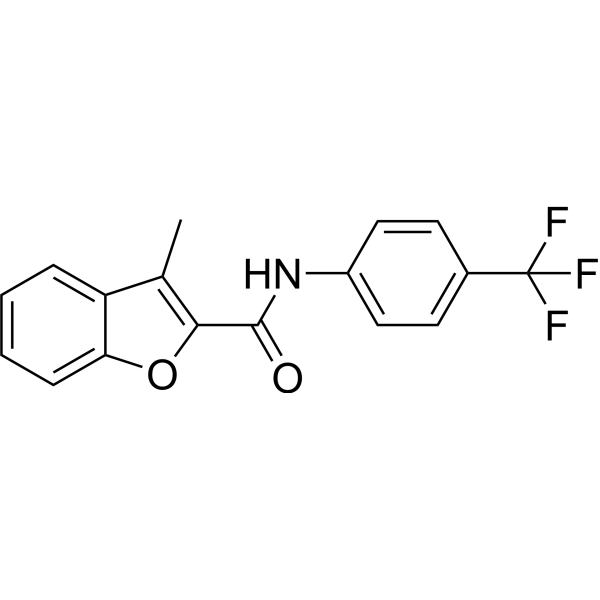
-
- HY-N3913
-
|
|
STAT
Bcl-2 Family
|
Cancer
|
|
Furowanin A is a flavonoid with anti-neoplastic effects. Furowanin A inhibits STAT3/Mcl-1 axis to suppress proliferation, block cell cycle progression, induce apoptosis and promote autophagy. Furowanin A potently inhibits colorectal cancer (CRC) cells .
|
-
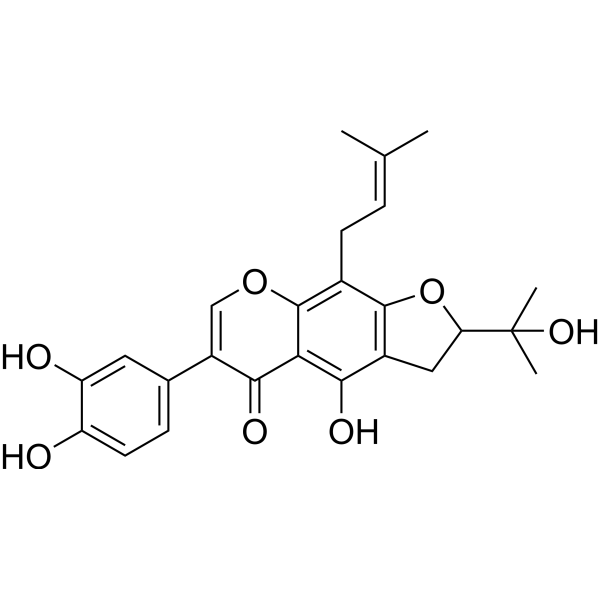
-
- HY-122959
-
|
|
Akt
PPAR
|
Metabolic Disease
|
|
Kihadanin B is a citrus limonoid that can be purified from the peels of immature Citrus unshiu. Kihadanin B suppresses adipogenesis through repression of the Akt-FOXO1-PPARγ axis in 3T3-L1 adipocytes .
|
-
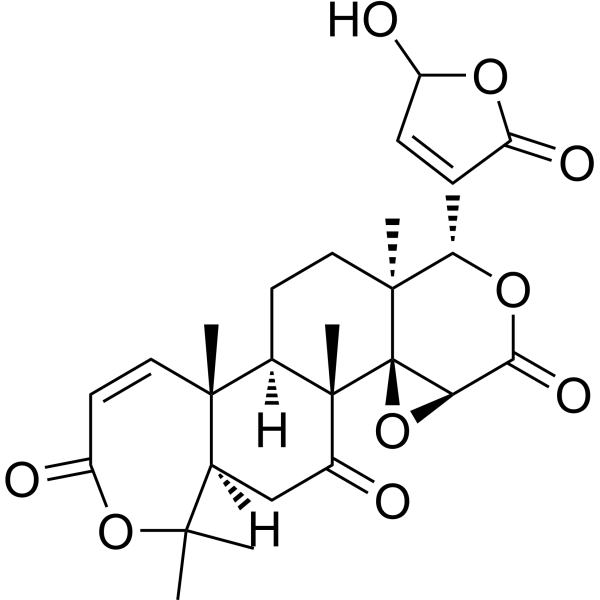
-
- HY-126390
-
|
NSC 150117
|
Phosphatase
Apoptosis
|
Inflammation/Immunology
Cancer
|
|
(E/Z)-BCI (NSC 150117) is a dual-specificity phosphatase 6 (DUSP6) inhibitor with anti-inflammatory activities. (E/Z)-BCI attenuates LPS-induced inflammatory mediators and ROS production in macrophage cells via activating the Nrf2 signaling axis and inhibiting the NF-κB pathway .
|
-
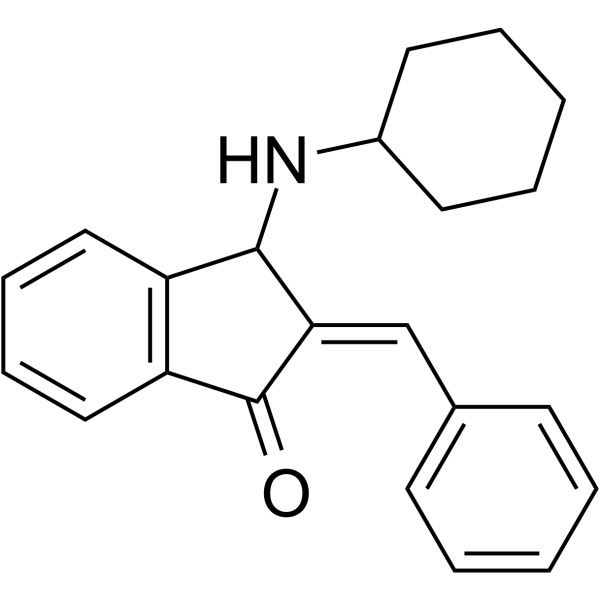
-
- HY-P3069
-
|
|
Neurokinin Receptor
|
Neurological Disease
Endocrinology
|
|
γ-Neuropeptide (rabbit) can be isolated from rabbit intestine. γ-Neuropeptide is an endogenous neurokinin peptide that acts as a neurokinin 2 (NK2) receptor agonist. γ-Neuropeptide mediates hypothalamic-pituitary-adrenal (HPA) axis, as well as reproductive hormone release .
|
-

-
- HY-N7043
-
|
|
Apoptosis
|
Cancer
|
|
Isosilybin A, a flavonolignan isolated from silymarin, has anti-prostate cancer (PCA) activity. Isosilybin A inhibits proliferation and induces G1 phase arrest and apoptosis in cancer cells, which activates apoptotic machinery in PCA cells via targeting Akt-NF-κB-androgen receptor (AR) axis .
|
-

-
- HY-B1811
-
|
|
|
|
|
Vasopressin is a cyclic nonapeptide that is synthesized centrally in the hypothalamus. Vasopressin participates in the hypothalamic-pituitary-adrenal axis, and regulates pituitary corticotropin secretion by potentiating the stimulatory effects of corticotropin releasing factor. Vasopressin also can act as a neurotransmitter, exerting its action by binding to specific G protein-coupled receptors .
|
-
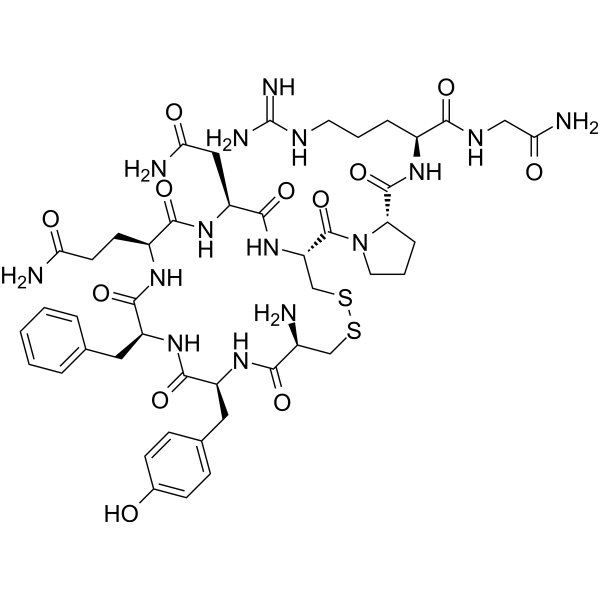
-
- HY-145413
-
|
|
Glutathione S-transferase
|
Cancer
|
|
BRD2889 is an analog of the alkaloid piperlongumine. BRD2889 is a robust modulator of the GSTP1-ISCU axis in pulmonary hypertension (PH) . BRD2889 is a click chemistry reagent, it contains an Alkyne group and can undergo copper-catalyzed azide-alkyne cycloaddition (CuAAc) with molecules containing Azide groups.
|
-
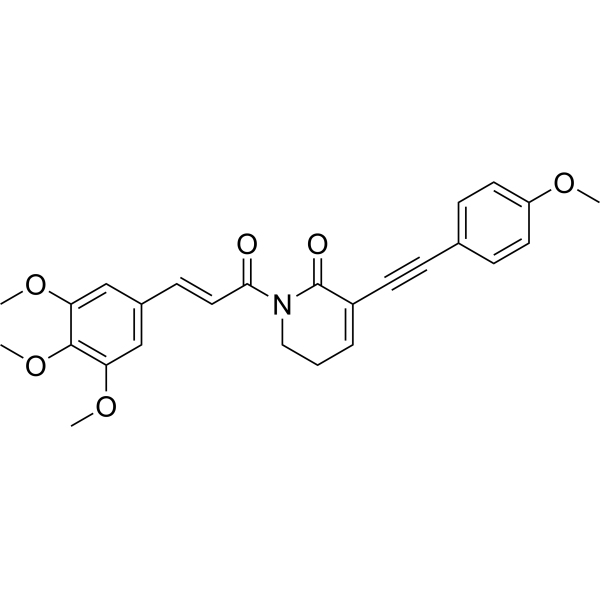
-
- HY-B0025
-
|
|
Glucosidase
|
Metabolic Disease
|
|
Voglibose is an orally active alpha-glucosidase inhibitor that prevents the development of colorectal precancerous lesions induced by obesity and diabetes. Voglibose reduces oxidative stress in an inflammatory environment and inhibits the insulin-like growth factor/insulin-like growth factor-1 receptor (IGF/IGF-1R) functional axis.
|
-
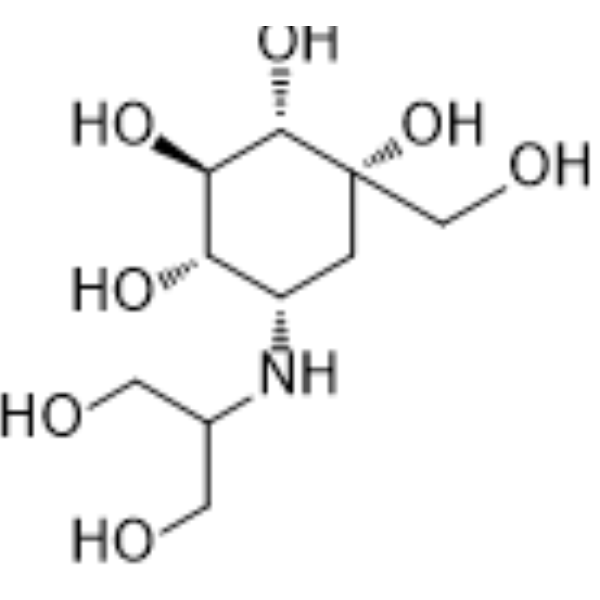
-
- HY-W015273A
-
|
|
Endogenous Metabolite
Ferroptosis
|
Metabolic Disease
Cancer
|
|
Trans-3-Indoleacrylic acid is a tryptophan metabolite, which promotes tumor development through inhibition of RSL3 (HY-100218A) induced ferroptosis via AHR-ALDH1A3-FSP1-CoQ10 axis, and facilitates colorectal carcinogenesis
|
-
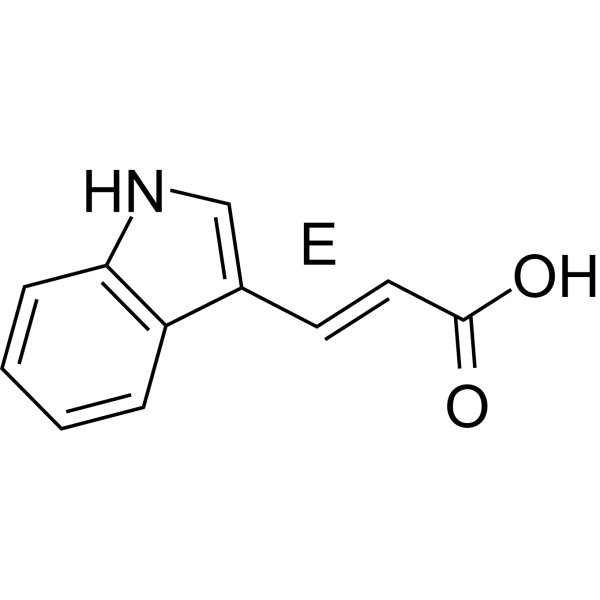
-
- HY-149814
-
|
|
PDHK
HSP
|
Cancer
|
|
PDK-IN-1 (compound 7o) is a pyruvate dehydrogenase kinase (PDK) inhibitor. PDK-IN-1 shows IC50 values of 0.03 and 0.1 μM for PDK1 and HSP90, respectively. PDK-IN-1 targets PDH/PDK axis thus reducing efficiently the tumor mass .
|
-
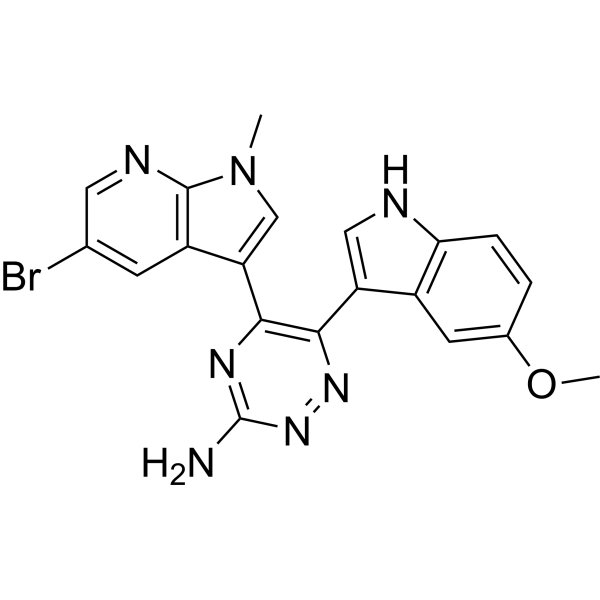
-
- HY-157416
-
|
|
Others
|
Metabolic Disease
|
|
COP1-ATGL modulator 1 (86) is an orally active modulator for COP1-ATGL axis. COP1-ATGL modulator 1 (86) could increase ATGL protein expression, reduce ATGL ubiquitination and COP1 autoubiquitination, and diminish lipid accumulation in hepatocytes in the nanomolar range .
|
-

-
- HY-P1250
-
|
Neuropeptide VF(124-131)(human)
|
Neuropeptide Y Receptor
|
Neurological Disease
|
|
RFRP-3 (Neuropeptide VF(124-131))(human), a human GnIH peptide homolog, is a potent inhibitor of gonadotropin secretion by inhibiting Ca 2+ mobilization. RFRP-3(human) is a NPFF1 receptor agonist, it inhibits forskolin-induced production of cAMP with an IC50 of 0.7 nM .
|
-
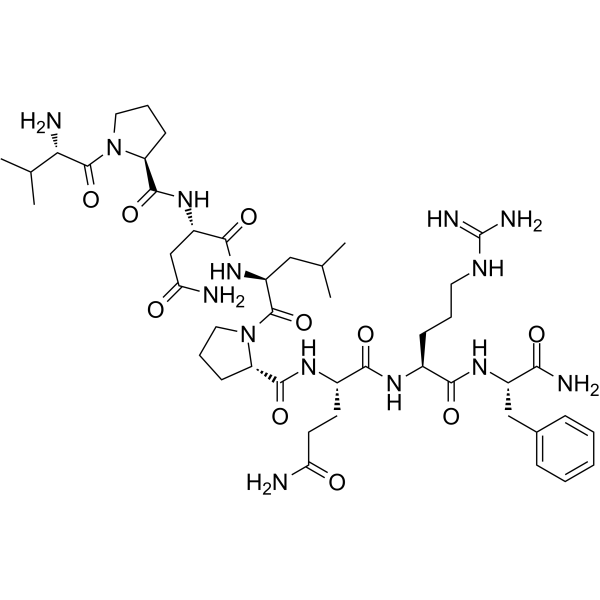
-
- HY-B0774
-
-
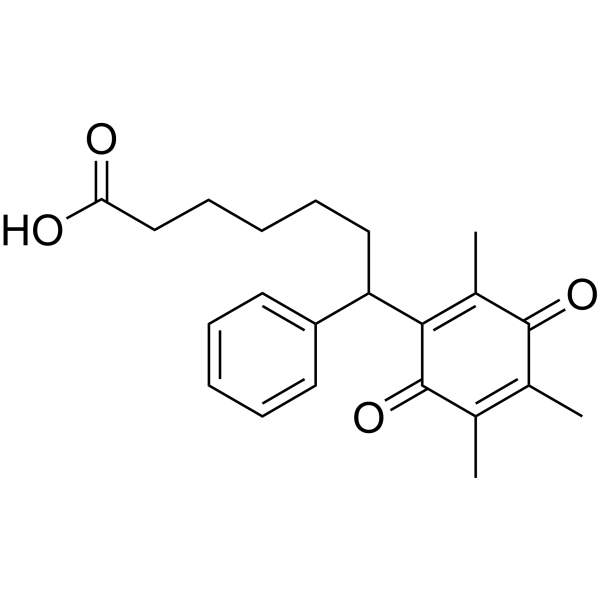
-
- HY-121983
-
|
|
Phospholipase
|
Cancer
|
|
CAY10594 is a potent phospholipase D2 (PLD2) inhibitor both in vitro (IC50=140 nM) and in cells (IC50=110 nM) . CAY10594 strongly inhibits the invasive migration of breast cancer cells in vitro and ameliorates acetaminophen-induced acute liver injury by regulating the phosphorylated-GSK-3β/JNK axis .
|
-
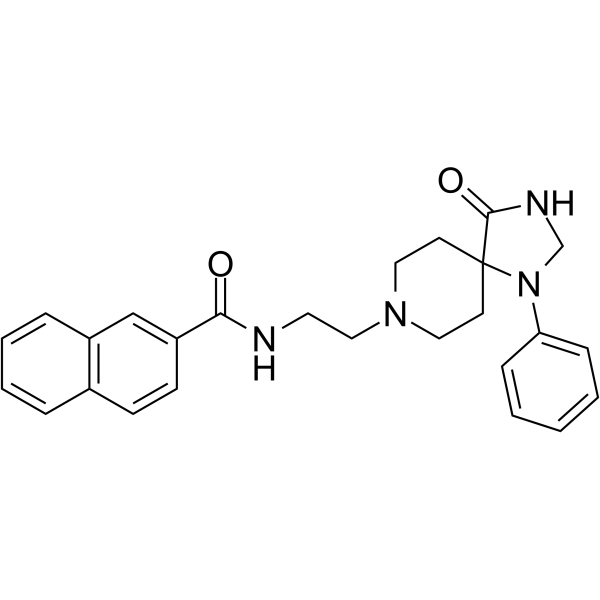
-
- HY-N6779S
-
|
Terinin-13C7
|
Isotope-Labeled Compounds
|
Infection
|
|
Patulin- 13C7 (Terinin- 13C7) is the 13C labeled Patulin (HY-N6779) . Patulin (Terinin) is a mycotoxin produced by fungi including the Aspergillus, Penicillium, and Byssochlamys species, is suspected to be clastogenic, mutagenic, teratogenic and cytotoxic. Patulin induces autophagy-dependent apoptosis through lysosomal-mitochondrial axis, and causes DNA damage .
|
-

-
- HY-145110
-
|
|
IGF-1R
|
Cancer
|
|
IGF-1R inhibitor-2 (example 121) is an insulin-like growth factor-1 receptor (IGF-1R) inhibitor. Downregulation of IGF-1R can reverse the transformed phenotype of tumor cells and potentially render them susceptible to apoptosis .
|
-
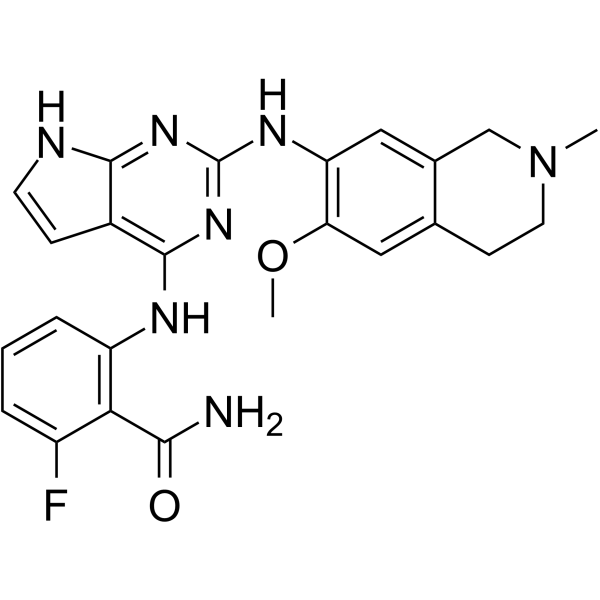
-
- HY-110066
-
|
|
Apoptosis
VEGFR
Akt
Angiotensin-converting Enzyme (ACE)
SARS-CoV
FXR
|
Cancer
|
|
(Z)-Guggulsterone, a constituent of Indian Ayurvedic medicinal plant Commiphora mukul, inhibits the growth of human prostate cancer cells by causing apoptosis. (Z)-Guggulsterone inhibits angiogenesis by suppressing the VEGF–VEGF-R2–Akt signaling axis . (Z)-Guggulsterone is also a potent FXR antagonist. (Z)-Guggulsterone reduces ACE2 expression and SARS-CoV-2 infection .
|
-
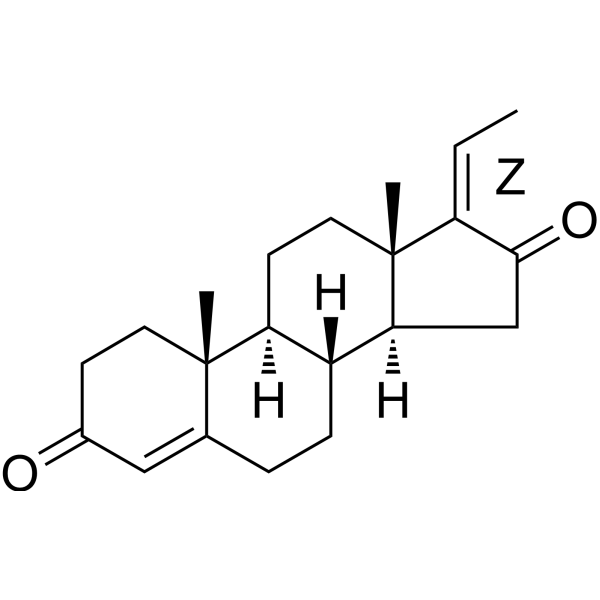
-
- HY-N0816
-
|
|
Apoptosis
Pyroptosis
|
Cancer
|
|
Polyphyllin VI, an active saponin, possess anti-cancer activities. Polyphyllin VI induces G2/M cell cycle arrest and triggers apoptosis. Polyphyllin VI induces caspase-1-mediated pyroptosis via the induction of ROS/NF-κB/NLRP3/GSDMD signal axis in non-small cell lung cancer .
|
-
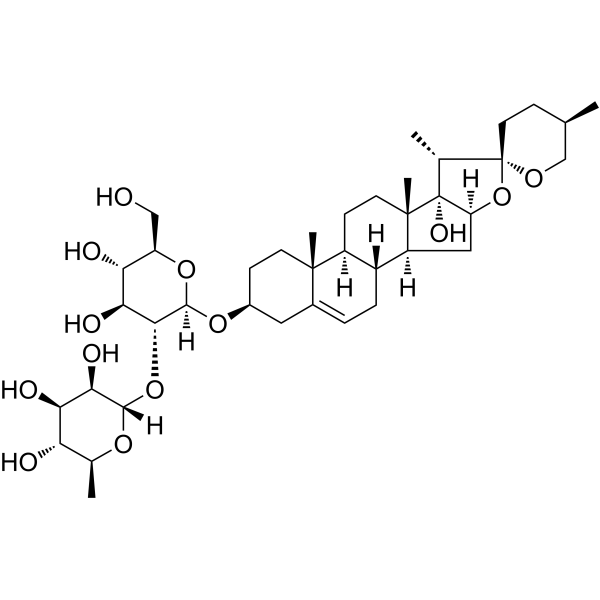
-
- HY-B0294
-
Flubendazole
Maximum Cited Publications
6 Publications Verification
|
Parasite
Microtubule/Tubulin
STAT
MDM-2/p53
Apoptosis
Autophagy
|
Infection
Cancer
|
|
Flubendazole is an anthelmintic drug based on altering microtubule structure, inhibition of tubulin polymerization and disruption of microtubule function. Flubendazole induces apoptosis in human colorectal cancer (CRC) by blocking the STAT3 signaling axis and activation of autophagy. Flubendazole induces P53 expression and reduced Cyclin B1 and p-cdc2 expression. Flubendazole is an antitumor agent. Flubendazole can be used for worm and intestinal parasites .
|
-
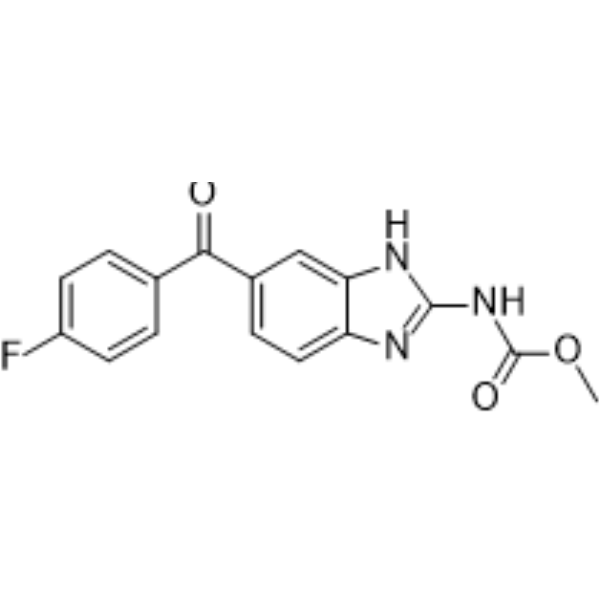
-
- HY-149428
-
AD4
1 Publications Verification
|
PROTACs
|
Cancer
|
|
AD4 is an artemisinin derivative that is a proteolytic targeting chimera (PROTAC) targeting PCLAF. AD4 can effectively degrade PCLAF in RS4;11 cells (IC50: 0.6 nM), thereby activating the p21/Rb axis and exerting anti-tumor activity. AD4 also prolonged survival of RS4;11-transplanted NOD/SCID mice, with in vivo efficacy .
|
-

-
- HY-149577
-
|
|
EBV
|
Cancer
|
|
Epstein-Barr virus (EBV) lytic cycle inducer-1 Dp44mT (compound C7) is an iron-chelatoe-like compound. Dp44mT cooperates with HDAC inhibitor Romidespin (HY-15149) and SAHA to induce EBV lytic cycle. Dp44mT reactivates EBV lytic cycle by activating the ERK1/2-autophagy axis in epithelial cancers .
|
-
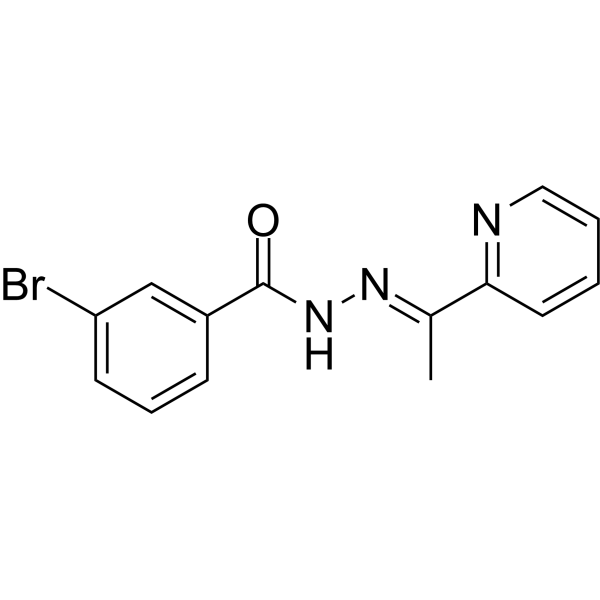
-
- HY-149092
-
|
|
TAM Receptor
|
Cancer
|
|
Anticancer agent 109 (compound 6-15) is an inhibitor of the Gas6-Axl axis with anti-cancer activity. Anticancer agent 109 inhibits the expression of Gas6 and Axl, and the expression p-PI3K and p-AKT in cancer cells, leads to G1 phase arrest and promotes cancer cells apoptosis, and inhibits tumor growth significantly in nude mouse tumor bearing models .
|
-

-
- HY-150596
-
|
|
Apoptosis
Bcl-2 Family
JNK
|
Cancer
|
|
CT1-3 is a potent anticancer agent. CT1-3 induces mitochondria-mediated apoptosis by regulating JNK/Bcl-2/Bax/XIAP pathway. CT1-3 suppresses the epithelial mesenchymal transition (EMT) potential of human cancer cells (HCCs) via regulating the E-cadherin/Snail axis, thus inhibits tumorigenesis. CT1-3 has a strong antitumor effect in mice model and exhibits no significant hepatic and renal toxicity .
|
-
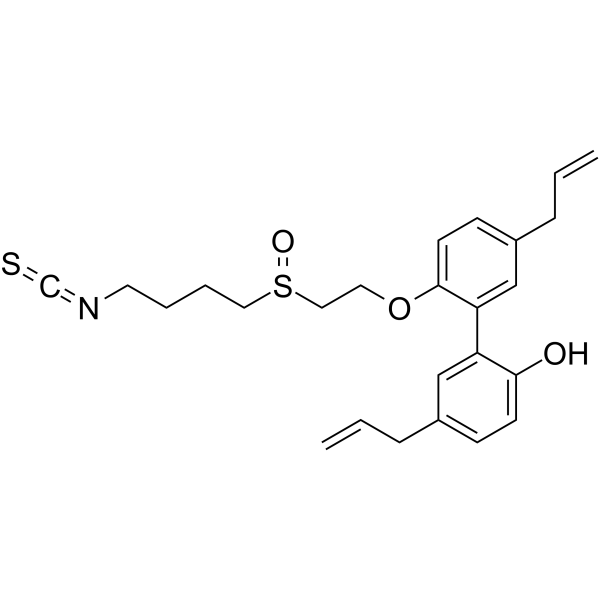
-
- HY-123805
-
|
|
HCV
IFNAR
|
Infection
|
|
KIN1400 is a potent IRF3 activator. KIN1400 triggers IRF3-dependent innate immune antiviral genes (RIG-I, MDA5, IFIT1, and Mx1) and IFN-β expression. KIN1400 inhibits WNV and DV, two mosquito-borne members of the Flaviviridae and the genus Flavivirus. KIN1400 also inhibits HCV replication. KIN1400 induces innate antiviral immunity through a MAVS-IRF3 axis .
|
-
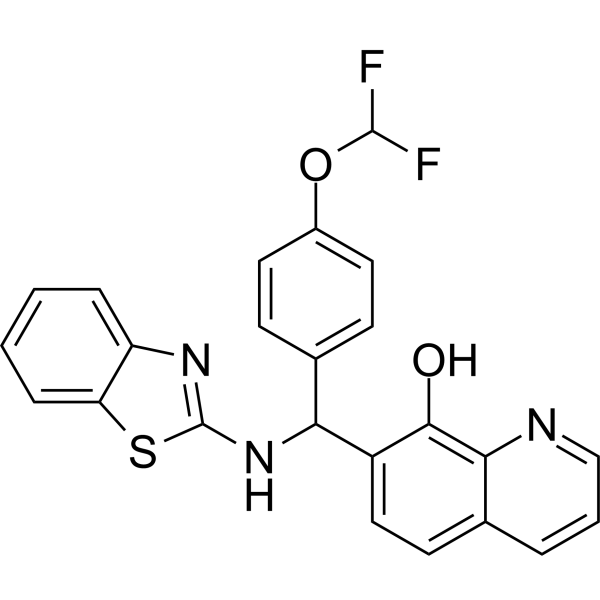
-
- HY-131181
-
LEI-401
1 Publications Verification
|
Phospholipase
|
Neurological Disease
|
|
LEI-401 is a first-in-class, selective, and CNS-active NAPE-PLD (N-acylphosphatidylethanolamine phospholipase D) inhibitor, with an IC50 of 27 nM. LEI-401 modulates emotional behavior in mice .
|
-
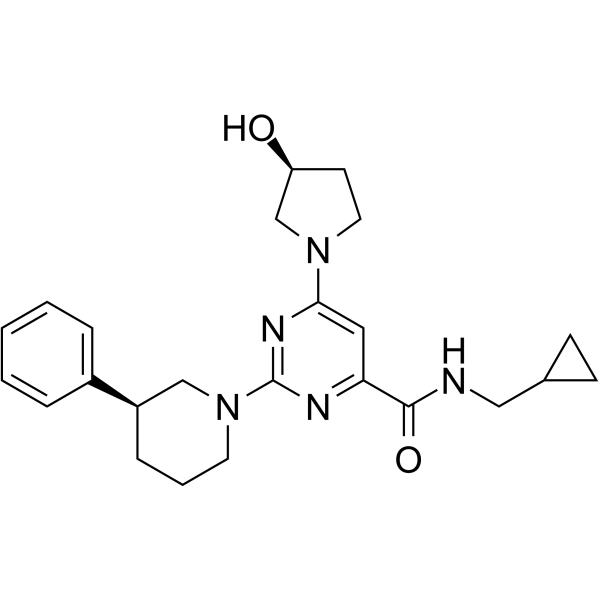
-
- HY-144806
-
PI3K/AKT-IN-1
Maximum Cited Publications
6 Publications Verification
|
PI3K
Akt
Apoptosis
|
Cancer
|
|
PI3K/AKT-IN-1 is an effective PI3K/AKT dual inhibitor (IC50 of 6.99, 4.01 and 3.36 μM for PI3Kγ, PI3Kδ and AKT, respectively). PI3K/AKT-IN-1 has anticancer activity and acts by inhibiting PI3K/AKT axis and inducing caspase 3 dependent apoptosis .
|
-
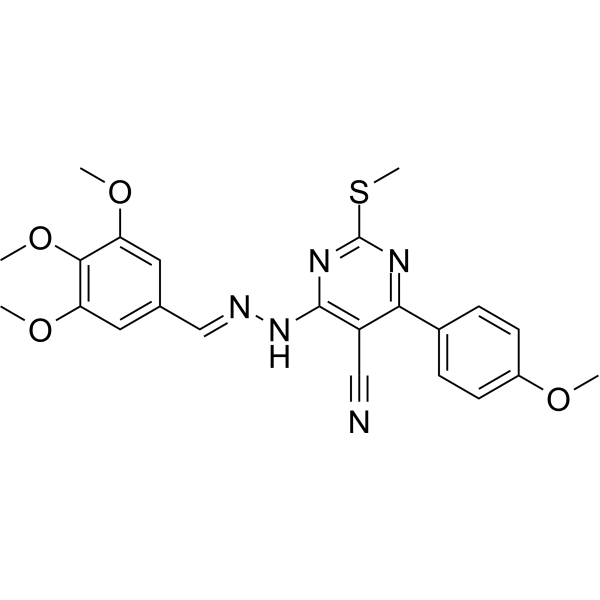
-
- HY-120793
-
|
TRB-N0224
|
Ras
Apoptosis
MMP
|
Inflammation/Immunology
Cancer
|
|
CMC2.24 (TRB-N0224), an orally active tricarbonylmethane agent, is effective against pancreatic tumor in mice by inhibiting Ras activation and its downstream effector ERK1/2 pathway. CMC2.24 is also a potent inhibitor of zinc-dependent MMPs with IC50s ranging from 2.0-69 μM. CMC2.24 alleviates osteoarthritis progression by restoring cartilage homeostasis and inhibiting chondrocyte apoptosis via the NF-κB/HIF-2α axis .
|
-
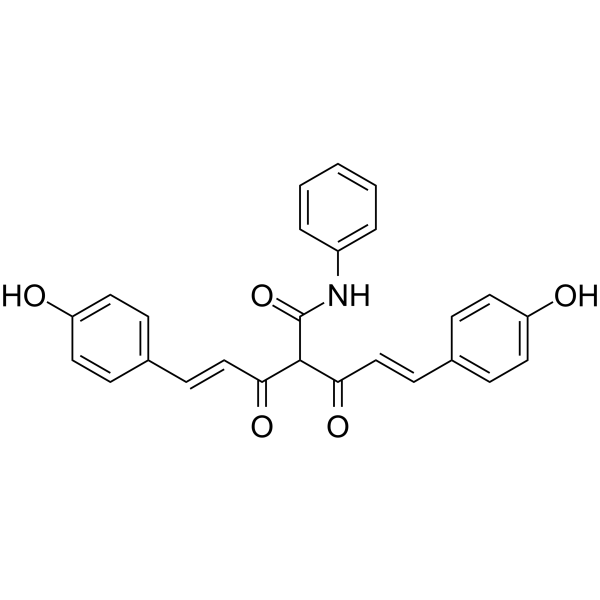
-
- HY-153687
-
|
|
Others
|
Neurological Disease
|
|
SORT-PGRN interaction inhibitor 2 is a SORT-PGRN inhibitor that can decreases SORT1 protein expression and increases extracellular PGRN secretion in mammalian cell lines. SORT-PGRN interaction inhibitor 2 can be used for neurological disease research .
|
-
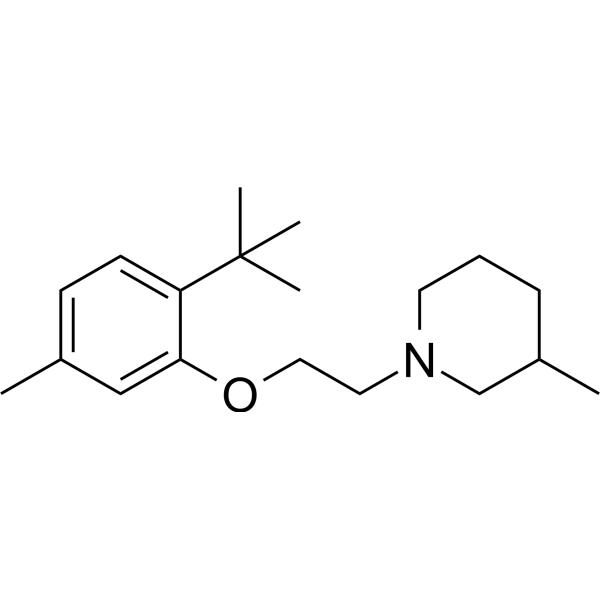
-
- HY-126077
-
|
LXI-15029
|
mTOR
|
Inflammation/Immunology
Cancer
|
|
MTI-31 (LXI-15029) is a potent, orally active and highly selective inhibitor of mTORC1 and mTORC2. MTI-31 is selective for mTOR (Kd: 0.20 nM) versus PIK3CA, PIK3CB and PIK3G with >5,000 fold selectivity in mTOR binding assays. MTI-31 shows an IC50 of 39 nM for mTOR in LANCE assay of mTOR substrate phosphorylation with 100 μM ATP. MTI-31 can be used for the research of breast cancer .
|
-
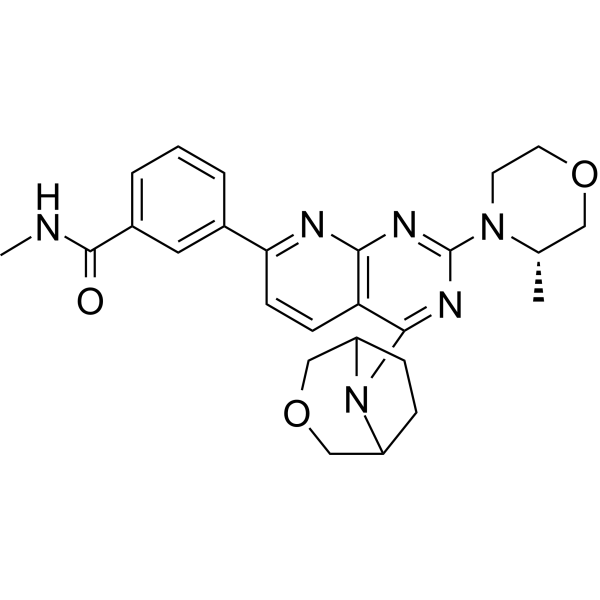
-
- HY-117820
-
-
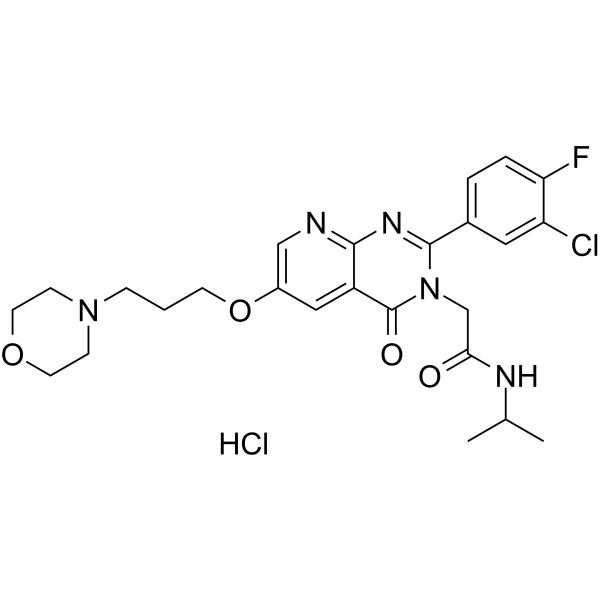
| Cat. No. |
Product Name |
Target |
Research Area |
-
- HY-P1520A
-
|
|
GnRH Receptor
|
Neurological Disease
|
|
Prolactin Releasing Peptide (1-31), human (acetate) is a high affinity GPR10 ligand that causes the release of the prolactin. Prolactin Releasing Peptide (1-31) binds to GPR10 for human and rats with Ki values of 1.03 nM and 0.33 nM, respectively. Prolactin Releasing Peptide (1-31) can be used for the research of the hypothalamo-pituitary axis .
|
-
- HY-P1520
-
|
|
GnRH Receptor
|
Neurological Disease
|
|
Prolactin Releasing Peptide (1-31), human is a high affinity GPR10 ligand that cause the release of the prolactin. Prolactin Releasing Peptide (1-31) binds to GPR10 for human and rats with Ki values of 1.03 nM and 0.33 nM, respectively. Prolactin Releasing Peptide (1-31) can be used for the research of the hypothalamo-pituitary axis .
|
-
- HY-P3539
-
|
|
GCGR
|
Neurological Disease
Endocrinology
|
|
Exendin-4 (3-39) is a peptide. Exendin-4 (3-39) is a truncated form of Exendin-4 (HY-13443) that lacks the first two amino acids. Exendin-4 is a potent Glucagon-like peptide-1 receptor (GLP-1r) agonist. Exendin-4 (3-39) and Exendin-4 can be used for the research of diabetic and hypothalamic-pituitary-adrenal (HPA) axis .
|
-
- HY-P10178
-
-
- HY-P3069
-
|
|
Neurokinin Receptor
|
Neurological Disease
Endocrinology
|
|
γ-Neuropeptide (rabbit) can be isolated from rabbit intestine. γ-Neuropeptide is an endogenous neurokinin peptide that acts as a neurokinin 2 (NK2) receptor agonist. γ-Neuropeptide mediates hypothalamic-pituitary-adrenal (HPA) axis, as well as reproductive hormone release .
|
-
- HY-P1250
-
|
Neuropeptide VF(124-131)(human)
|
Neuropeptide Y Receptor
|
Neurological Disease
|
|
RFRP-3 (Neuropeptide VF(124-131))(human), a human GnIH peptide homolog, is a potent inhibitor of gonadotropin secretion by inhibiting Ca 2+ mobilization. RFRP-3(human) is a NPFF1 receptor agonist, it inhibits forskolin-induced production of cAMP with an IC50 of 0.7 nM .
|
| Cat. No. |
Product Name |
Target |
Research Area |
-
- HY-P99419
-
|
GEN1046
|
PD-1/PD-L1
|
Cancer
|
|
Acasunlimab (GEN1046) is a bispecific antibody (bsAb) targeting PD-L1 and 4-1BB. Acasunlimab enhances T-cell and NK-cell function through conditional 4-1BB stimulation while constitutively blocking the PD-1/PD-L1 inhibitory axis. Acasunlimab can be used in research of cancer .
|
| Cat. No. |
Product Name |
Category |
Target |
Chemical Structure |
| Cat. No. |
Product Name |
Chemical Structure |
-
- HY-N6779S
-
|
|
|
Patulin- 13C7 (Terinin- 13C7) is the 13C labeled Patulin (HY-N6779) . Patulin (Terinin) is a mycotoxin produced by fungi including the Aspergillus, Penicillium, and Byssochlamys species, is suspected to be clastogenic, mutagenic, teratogenic and cytotoxic. Patulin induces autophagy-dependent apoptosis through lysosomal-mitochondrial axis, and causes DNA damage .
|
-

| Cat. No. |
Product Name |
Application |
Reactivity |
-
- HY-P82477
-
|
Axil; Axin like protein; Axin2; Axis inhibition protein 2; Conductin
|
WB
|
Human, Mouse, Rat |
Your information is safe with us. * Required Fields.
Inquiry Information
- Product Name:
- Cat. No.:
- Quantity:
- MCE Japan Authorized Agent:






















































